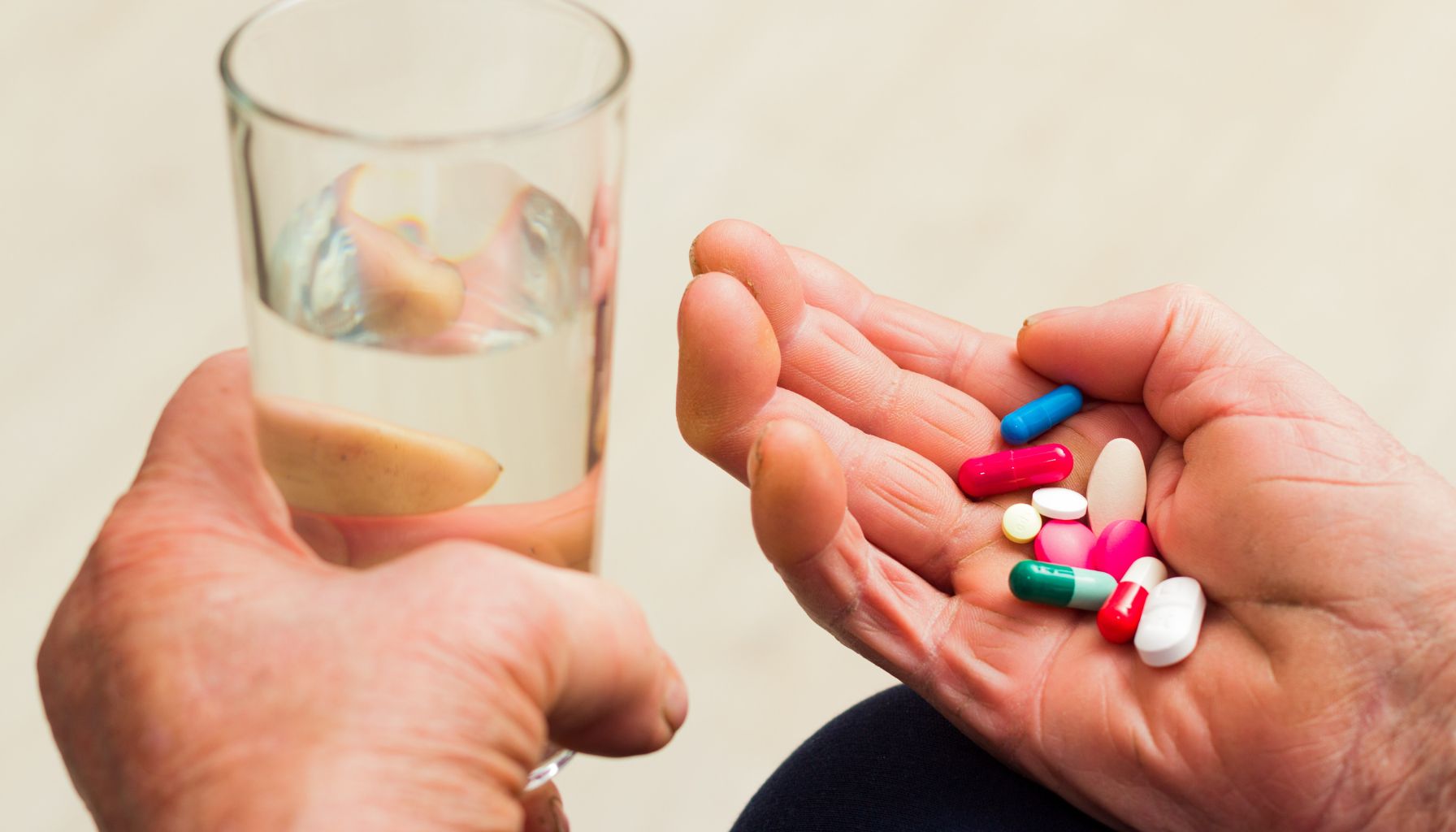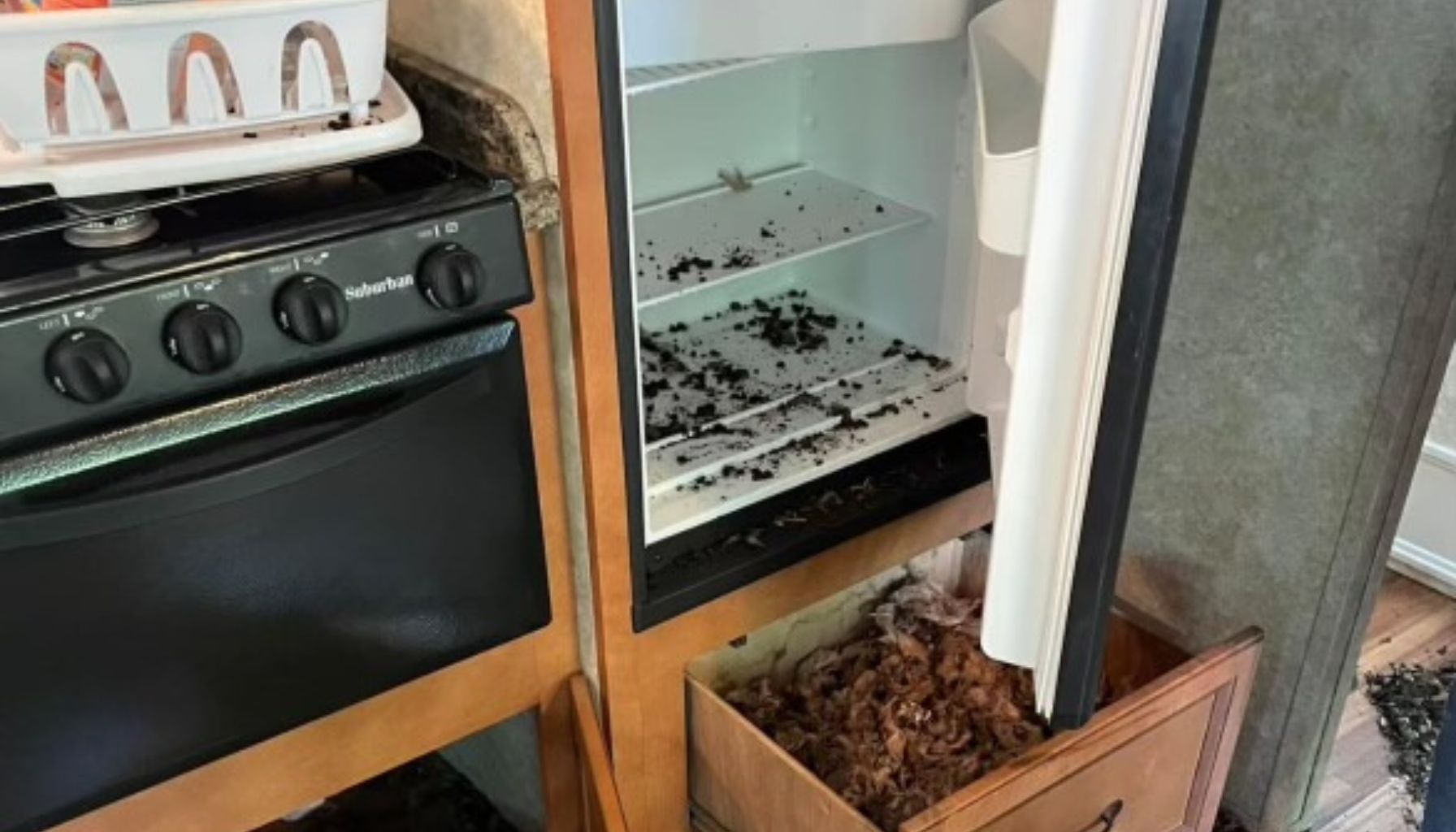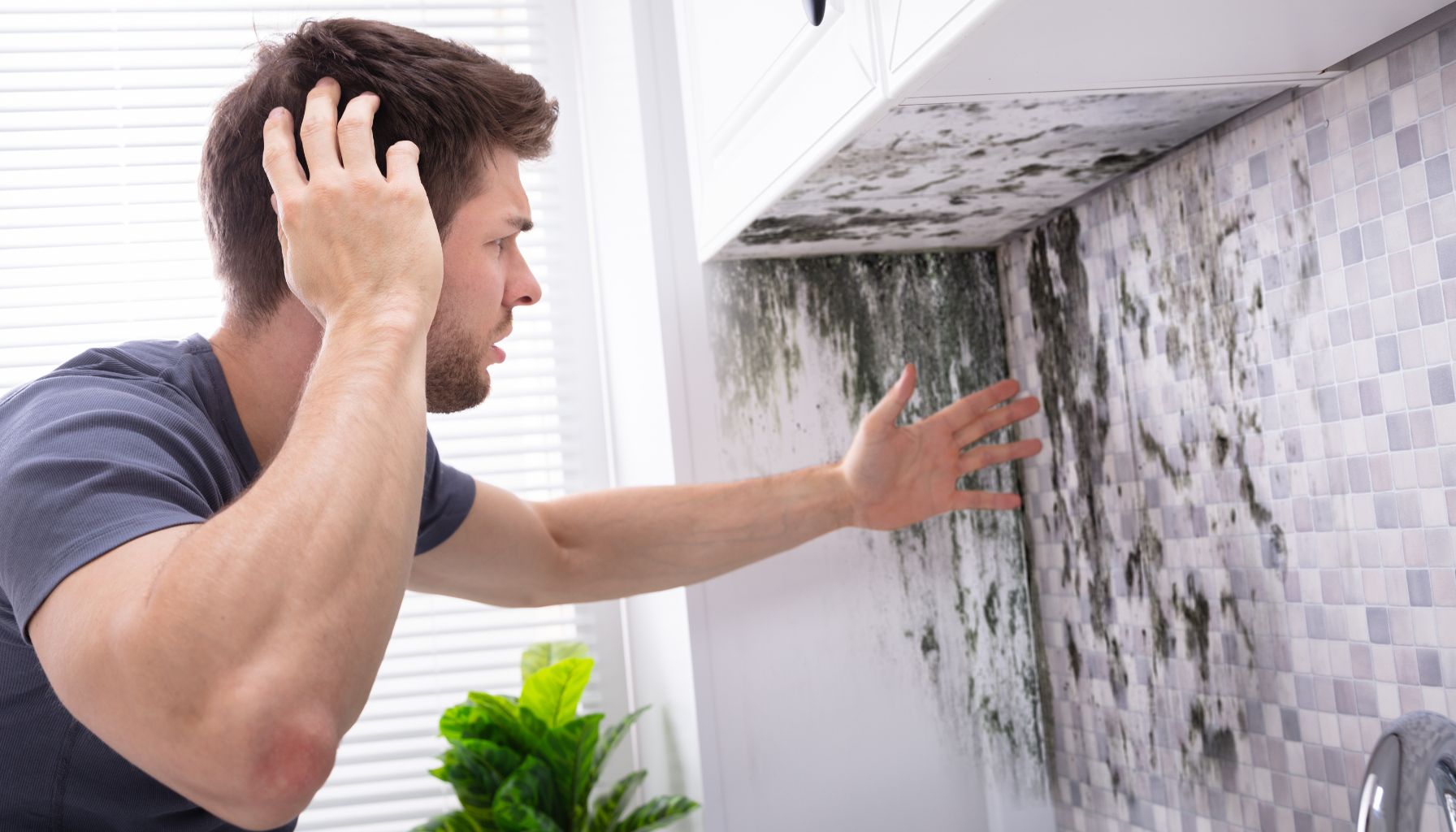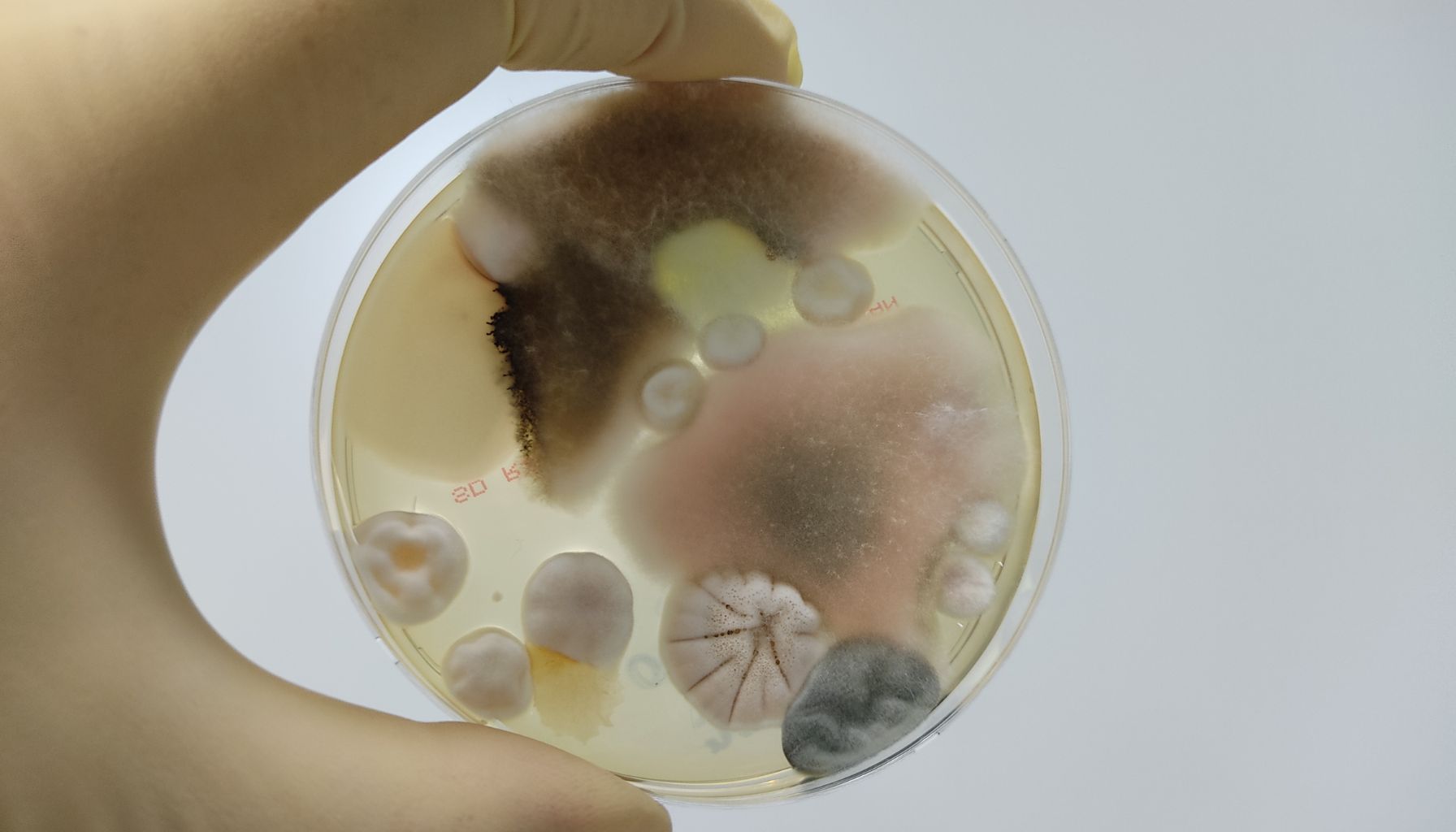Have you ever noticed a musty smell or discolored spots on walls or ceilings in your home? If so, there’s a chance you may have mold growing somewhere in your house. Mold can be a common problem in many homes, and it’s important to be able to identify it before it becomes a bigger issue. In this article, we will provide you with some simple tips and techniques on how to identify mold in your home, so you can take the necessary steps to eliminate it and create a healthy living environment for you and your family.
Understanding Mold Basics
Mold is a type of fungus that can be found both indoors and outdoors. It thrives in moist and humid environments and can grow on a variety of surfaces, including walls, ceilings, floors, and even furniture. Mold reproduces by releasing spores into the air, which can then settle and form new colonies in other areas of your home.
What is mold?
Mold is a type of fungi that can appear in various colors, including black, green, and white. It often has a fuzzy or slimy texture and can have an unpleasant musty odor. Mold plays an important role in nature by breaking down organic materials, but when it grows indoors, it can lead to various health issues and cause damage to your home.
Common types of mold found in homes
There are several types of mold commonly found in homes, including:
- Stachybotrys chartarum (black mold): This is a toxic mold that often appears black or dark green. It thrives in areas that have been damaged by water, such as leaky pipes or flooded basements.
- Aspergillus: This is a common type of mold that can appear in a variety of colors, including green, brown, or black. It can grow on walls, carpets, and even inside HVAC systems.
- Penicillium: This type of mold is often blue or green and can commonly be found on water-damaged materials, such as drywall or insulation. It can also produce a strong musty smell.
- Cladosporium: Cladosporium is a mold that can grow on both indoor and outdoor surfaces. It often appears as a black or greenish-black color and can be found in areas with high humidity, such as bathrooms or basements.
How mold develops and grows
Mold requires moisture to grow and thrive. When there is excess humidity or water damage in your home, it creates the perfect breeding ground for mold. Mold spores are usually present in the air, and when they land on a damp surface, they can begin to grow. Over time, the mold colonies can expand and release more spores into the air, which can lead to further contamination.
Health Impacts of Mold
Exposure to mold can cause a variety of health symptoms and long-term impacts. It is important to be aware of these potential risks, especially if you suspect mold growth in your home.

Common health symptoms related to mold exposure
Exposure to mold can cause a range of health symptoms, including:
- Allergic reactions such as sneezing, coughing, and wheezing
- Itchy or watery eyes
- Skin irritation or rashes
- Headaches or migraines
- Fatigue or lack of energy
If you or your family members experience these symptoms and they seem to worsen when you are at home, it may be a sign of mold exposure.
Long-term health impacts
Prolonged exposure to mold can lead to more severe health issues, especially for individuals with existing respiratory conditions or weakened immune systems. These long-term impacts can include:
- Asthma or worsening of existing asthma symptoms
- Chronic sinus infections
- Respiratory infections
- Allergic reactions becoming more severe
- Development of mold allergies
It is important to address any mold issues in your home promptly to minimize the risk of long-term health problems.
Vulnerable populations at risk
Certain populations are more susceptible to the health impacts of mold exposure, including:
- Infants and young children
- Older adults
- Individuals with respiratory conditions such as asthma or COPD
- People with weakened immune systems, such as those undergoing chemotherapy or organ transplant recipients
If you or someone in your household falls into one of these categories, it is crucial to take mold detection and remediation seriously to protect their health.
Preliminary Signs of Mold
Detecting mold in your home early can help prevent further damage and potential health issues. Look out for these preliminary signs of mold growth.

Smell: Musty or damp odors
One of the first indicators of mold growth is a distinct musty or damp smell in your home. Mold has a distinct odor that is often described as earthy or stale. If you notice this smell, especially in areas prone to moisture, such as bathrooms or basements, it could be a sign of hidden mold.
Appearance: Visible signs of mold
Visible signs of mold growth should never be ignored. Look out for discoloration or stains on walls, ceilings, or other surfaces. Mold can appear in various colors, such as black, green, or white, and may have a fuzzy or slimy texture.
Health: Consistent allergic reactions
If you or your family members experience consistent allergic reactions, such as sneezing, coughing, or itchy eyes, that seem to worsen when you are at home, it could be a sign of mold exposure. Pay attention to whether these symptoms improve when you are away from your home.
Common Mold Infested Areas
Mold can grow in any area of your home that has excess moisture. However, there are certain areas that are more prone to mold infestation.

The Kitchen
Kitchens are susceptible to mold growth due to the presence of water sources, such as sinks and dishwashers. Keep an eye out for mold in hidden areas such as under sink cabinets, behind appliances, or on food items that have gone bad.
The Bathroom
Bathrooms are another common area for mold growth, as they tend to be humid and often have poor ventilation. Check for mold in areas around the shower, bathtub, sink, and toilet. Pay extra attention to areas where water may accumulate, such as shower curtains or grout lines.
The Basement
Basements are notorious for having excess moisture, making them a prime breeding ground for mold. Check for mold on walls, floors, and any stored items that may have been exposed to water damage.
HVAC Systems
Heating, ventilation, and air conditioning (HVAC) systems can harbor mold if not properly maintained. Mold spores can easily spread through the ductwork and circulate throughout your home. Regularly inspect and clean your HVAC system to prevent mold growth.
Identifying Mold Via Physical Characteristics
The physical characteristics of mold can vary depending on the type and stage of growth. By understanding these characteristics, you can better identify and address mold issues in your home.
Color of Mold
Mold can appear in a range of colors, including black, green, white, yellow, or even pink. The color can vary based on the type of mold and the surface it is growing on. Pay attention to any unusual discoloration or stains, especially in areas prone to moisture.
Texture of Mold
The texture of mold can vary as well. It can be fuzzy, slimy, or powdery in consistency. Touch the affected area gently to determine the texture. Exercise caution when touching mold, as it can cause allergic reactions or skin irritation.
Pattern of Mold Growth
Mold can grow in various patterns, depending on the conditions and surfaces it is growing on. It may appear as spots, patches, or even appear to be spreading in a specific direction. Take note of the pattern and document any changes over time, as this can help in identifying the source of the moisture issue.
Tools to Detect Mold in Your Home
While some mold growth may be visible to the naked eye, you may need additional tools to detect mold in hidden areas or to determine the extent of the infestation.
Mold Testing Kits
Mold testing kits are available for purchase and can help you identify the presence of mold in your home. These kits usually include swabs or adhesive tapes that you can use to collect samples from suspected mold areas. The samples can then be sent to a laboratory for analysis.
Moisture Meters
Moisture meters are useful tools for detecting areas with excess moisture, which can indicate a potential mold problem. These handheld devices measure the moisture content in materials such as walls, floors, or wood. Increased moisture levels can point to areas where mold may be present.
Professional Mold Inspection
If you suspect a significant mold issue in your home or if you are unable to locate the source of mold growth, it may be necessary to hire a professional mold inspector. These professionals have the expertise and tools to conduct a thorough assessment of your home and identify any hidden mold problems.
How to Collect Samples for Mold Testing
If you choose to use a DIY mold testing kit or hire a professional mold inspection company, you will need to collect samples for testing. The following methods can help you collect accurate samples.
DIY Testing Kits
Most DIY mold testing kits include swabs or adhesive tapes for sample collection. Carefully follow the instructions provided with the kit to collect samples from visible mold growth areas. Make sure to collect samples from different surfaces, as it can help identify the type and extent of the mold infestation.
Hiring a Mold Inspection Company
If you decide to hire a mold inspection company, they will be responsible for collecting the samples for testing. These professionals have the necessary experience and equipment to collect samples from various surfaces in your home, including hidden areas such as behind walls or underneath flooring.
Understanding Mold Test Results
Once you have collected the samples and sent them to a laboratory for analysis, it is important to understand the results of the mold test.

Interpreting Lab Test Results
The lab will provide you with a detailed report of the mold species present in the samples. The report may also include information about the quantity of mold spores and any additional findings. Some labs may offer recommendations for remediation based on the test results.
When to Consult with a Professional
If you are unsure how to interpret the mold test results or if the results indicate a significant mold problem, it is advisable to consult with a professional mold remediation company. They can help you understand the severity of the issue and provide guidance on the appropriate actions to take.
Preventing Future Mold Growth
Taking preventive measures to control moisture and humidity levels in your home is essential in preventing future mold growth.
Controlling Moisture and Humidity Levels
Ensure that your home is properly ventilated, especially in areas prone to moisture, such as bathrooms and kitchens. Use exhaust fans or open windows to reduce humidity levels. Fix any leaks or water damage promptly and ensure that any damp areas are thoroughly dried.
Regular Cleaning and Maintenance
Regularly clean your home to prevent the buildup of dust, dirt, or organic materials that can provide a food source for mold. Use mold-resistant cleaning products and techniques to remove any visible mold. Pay special attention to high-risk areas such as bathrooms and basements.
Preventive Measures in Mold-prone Areas
Take additional preventive measures in areas that are more prone to mold growth. For example, use mold-resistant paint or install moisture barriers in the basement. Consider using dehumidifiers to maintain optimal humidity levels in your home.
Professional Mold Removal
In some cases, professional mold removal may be necessary to ensure the complete and safe removal of mold from your home.

When to Call a Professional
If you have a large mold infestation, extensive damage, or if the mold is affecting sensitive individuals, it is best to call in professional mold removal experts. They have the required training, protective gear, and specialized equipment to safely remove mold and prevent its recurrence.
Choosing a Reliable Mold Removal Company
When selecting a professional mold removal company, consider their experience, certifications, and reputation. Look for companies that follow industry guidelines and use environmentally friendly methods. Obtaining multiple quotes and asking for references can help ensure you choose a reliable and trustworthy company.
The Mold Removal Process
The mold removal process typically involves the following steps:
- Assessment: The mold removal experts will conduct a thorough assessment of your home to determine the extent of the infestation and identify the source of moisture.
- Containment: To prevent the spread of mold spores, the affected areas will be carefully sealed off using plastic sheeting and negative air pressure machines.
- Removal: Mold-infested materials such as drywall or carpeting may need to be removed and properly disposed of. The experts will use specialized techniques to safely remove mold from surfaces.
- Cleaning and Treatment: The remaining surfaces will be thoroughly cleaned using mold-specific cleaners and antimicrobial treatments to kill any remaining mold spores.
- Prevention: The professionals will advise you on preventive measures to ensure that mold does not reoccur in your home. This may involve recommendations for moisture control, ventilation improvements, or other preventive measures.
By understanding the basics of mold, its health impacts, and how to identify and prevent mold growth in your home, you can create a healthier living environment for you and your family. Regular maintenance, prompt remediation, and professional assistance when needed will help keep your home mold-free and protect your well-being.



